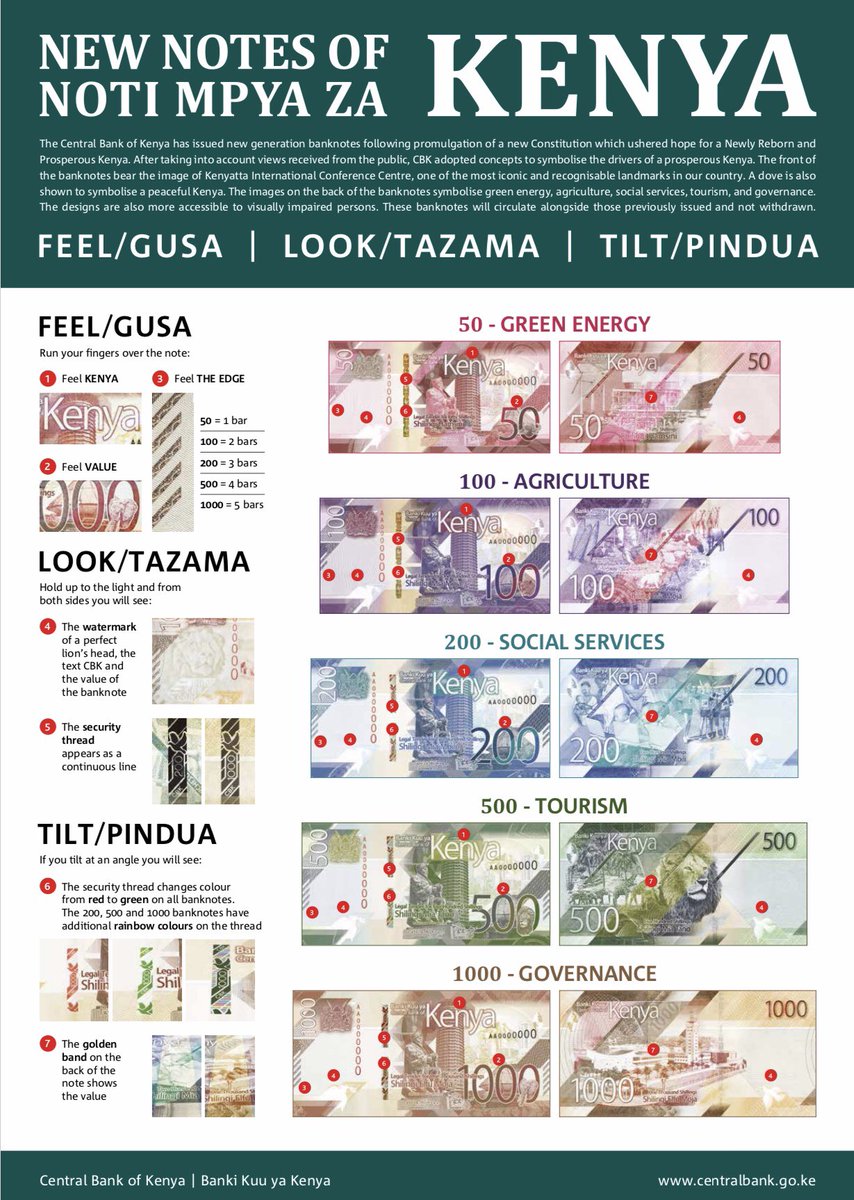 Around the world, probably fewer than a dozen companies literally make money. When they do, it is almost certainly with the inks supplied by a single privately held Swiss company, on presses made by another Swiss enterprise and with paper from a few specialized providers.
Around the world, probably fewer than a dozen companies literally make money. When they do, it is almost certainly with the inks supplied by a single privately held Swiss company, on presses made by another Swiss enterprise and with paper from a few specialized providers.
This means it will be a real struggle for masters of fabricators to create a fake Kenyan bill especially the new banknotes.
As President Uhuru makes drastic changes to meet pledges made by the Jubilee party during the 2017 presidential elections, the government announced a shocking move that is likely to affect money launderers and those hoarding proceeds of corruption during the Madaraka day celebration held in Narok County.
Central Bank Of Kenya has launched new notes that are consistent with Kenya’s 2010 Constitution which banned usage of portraits of leaders on currency. CBK also announced that old generation Ksh 1000 notes must be exchanged by Oct 1 2019 after which they cease to be legal tender. pic.twitter.com/3EaNFrv86x
— Tv Klassik (@TvKlassik) June 1, 2019
By a Gazette Notice dated May 31, 2019, all persons have until October 1, 2019, to exchange old banknotes, after which the older Sh1,000 will cease to be legal tender
In coming days, Kenyans will start seeing the new Sh50, Sh100, Sh200 and Sh500 notes that conform with the provisions of the Constitution, which require the CBK to come up currencies that do not have images of the sitting or former presidents.
The notes will come in themes and will have pictures of the country’s Big Five — the buffalo, the leopard, rhino, the lion and the elephant.
CBK says the five notes would bear a significant aspect of Kenya, and as coins, they would serve as means of passing knowledge, conserving culture and promoting the country’s uniqueness.
All the notes would bear the image of the Kenyatta International Convention Centre.
“The banknotes also embody the big five — nyati (buffalo), chui (leopard), kifaru (rhino), simba (lion) and ndovu (elephant),” Dr Njoroge said.
Every note will have a theme to show the people and the beautiful nature of Kenya.
“For the first time, the banknotes bear features that make them more accessible to the visually impaired members of our society,” Dr Njoroge said, adding that the CBK would soon roll out an awareness campaign on the features of the new notes.
Some of the security features of the notes include bars when felt at the edge.
The Sh50 note has one bar, Sh100 two bars, Sh200 three bars while the Sh500 and Sh1,000 notes will have four and five bars respectively.
CBK says when one runs fingers over the notes, he or she can feel Kenya and the value of the currencies.
When held up to the light from both sides, one can see a watermark of a lion’s head, the text “CBK” and the value of the note.
The security thread appears as a continuous line on the new note.
If the note is tilted at an angle, the thread changes colour from red to green.
The 200, 500 and 1,000 banknotes have additional rainbow colours on the thread.
Most of the world’s currency, including the United States dollar and the Kenyan shilling, is produced by the intaglio method of printing, on presses made by De La Rue-Giori S.A., a privately held Swiss company of which De La Rue P.L.C. of London owns 50 per cent.
In the intaglio method, letters and images are engraved onto a metal plate. The plate’s surface is inked, then wiped clean, so that ink remains only in the etched lines. When the ink is taken up by a piece of paper, it “actually sits on the surface of the note, like a business card.”
The method, more expensive than offset printing, requires special presses and is itself one of the oldest anti-counterfeiting techniques.
Sicpa, the ink producer, is offering currency printers a special ink that changes colour depending on how light strikes it. Thus, a genuine bill will change colour when moved, but the fake will not.
This “optically variable ink” is already used in currencies printed for Argentina, Israel, Kenya, Singapore, Thailand, the United Arab Emirates and Zaire.